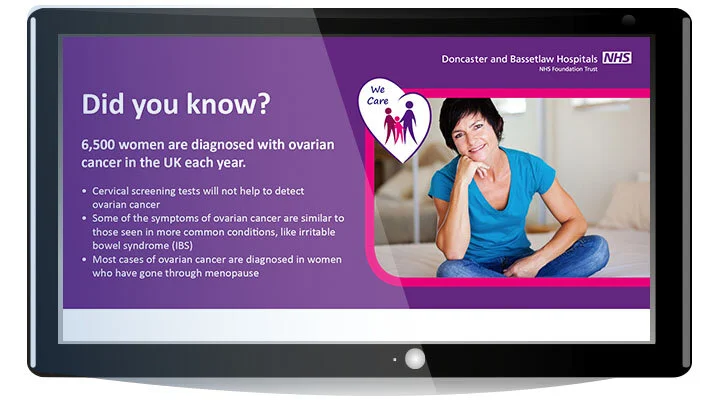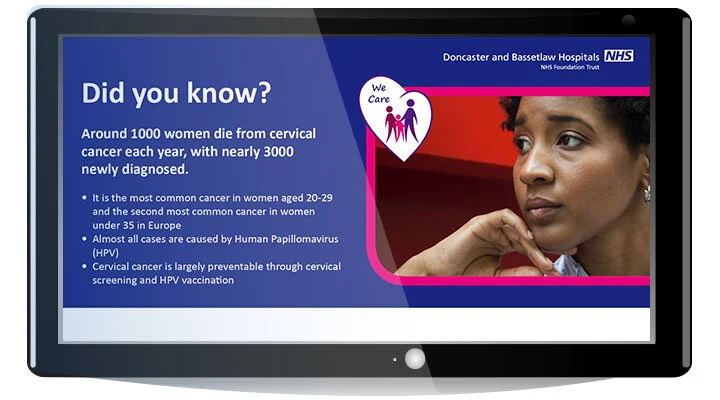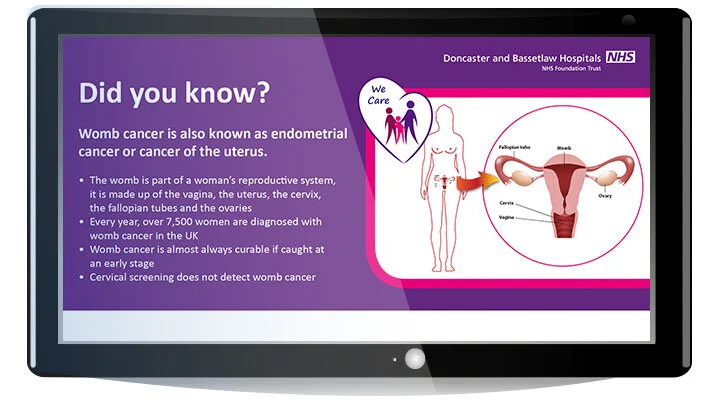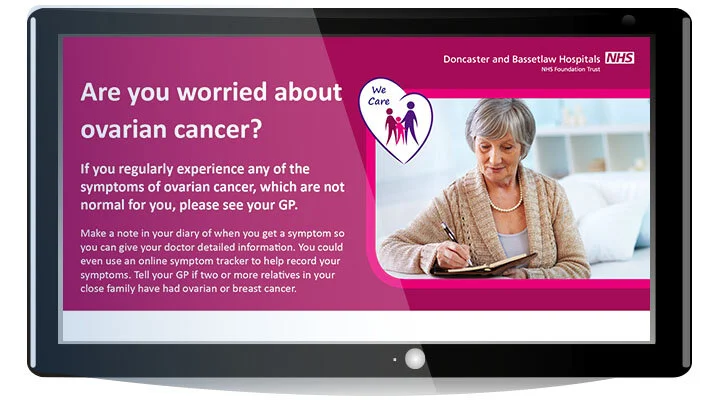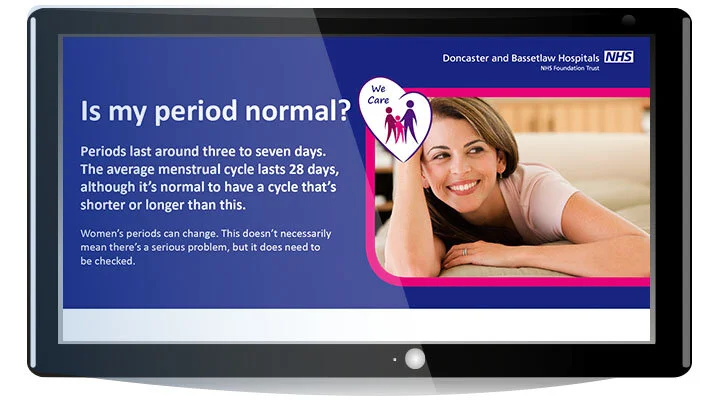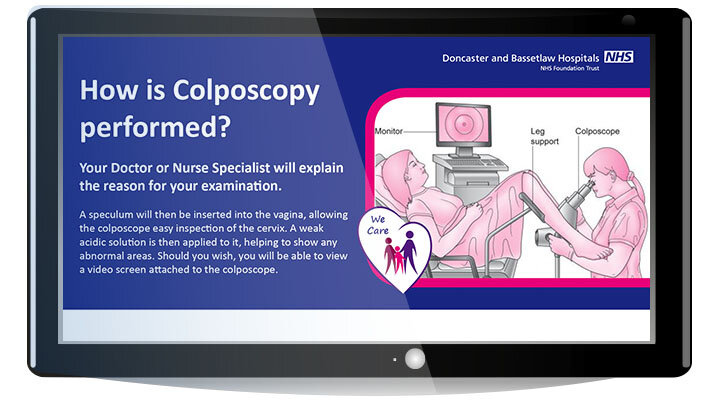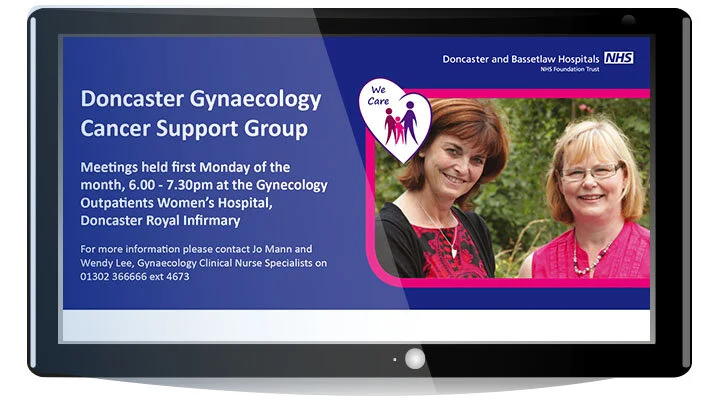Digital Signage Solutions for Gynaecology
Over at Doncaster and Bassetlaw Hospitals NHS Foundation Trust we’ve recently helped to create a range of messages for their gynaecology department. It was a brand new clinic for our message arsenal, and a bit of an interesting subject to tackle. The messages needed to be delicate, but informative. The subject matter isn’t one that is openly discussed often, especially amongst the older generations who many of the messages are targeting, so we needed to find an effective way of communicating with that group and creating messages they would respond to. We looked at brochures and posters already available in the clinic, and transformed the wealth of information found in these into more palatable, bite sized, digital chunks. Like these:
1. Basic information
Our first stop is usually to create a few messages covering the most basic information surrounding the conditions that the clinic treats. So, we made these handy ‘do you know’ messages about cervical, ovarian and womb cancer. All contain useful and pertinent information to most women in the clinic.
2. Advice and tips
Next we try and create messages with practical tips and information. For example, the above message suggests writing a diary of symptoms to give to your GP if you’re concerned about ovarian cancer. This is useful for your doctor and helps to keep things clear in the mind of a patient.
3. Useful information
We also like to create as many messages as possible containing useful information that patients may not know. It helps patients to ask the right questions when they get into the clinic, and can sometimes give visitors the first inkling that something isn’t right.
4. Practical information
Patients are often nervous and anxious when waiting in the clinic. They may not know a lot about the procedure they’re booked in for and possibly fear pain and embarrassment. Messages like the colposcopy one above help to remove much of the mystery about certain procedures and can calm the nerves, especially if the patient is too embarrassed to ask questions in the clinic straight away.
5. Supportive messages
It can be very stressful for patients and visitors alike when someone is unwell. Many hospitals offer tremendous support groups and programmes, so it’s important that the people in the waiting room know what’s available and how to take part. We have quite a few messages regarding gynaecological charities and support groups that can help to point a worried patient or family member in the right direction.
Clinic visits can be daunting for patients, but if we arm them with the right patient information messages we can help make the experience safer and more successful for everyone.

